In a growing genre of middle grade books about trans and nonbinary youth, this one stands out for its insights and nuance.
Twelve-year-old Ollie Thompson is afraid of puberty and its implications. They don’t know what it even really means to be a woman, and they’re not sure they want to be one—though they’re not sure they want to be a boy/man, either. (There are also hints that Ollie is asexual, although the term is never used.) As Ollie’s best friend Cal embraces femininity and crushes on boys, Ollie feels a growing gap between them. But the boys Ollie used to play hockey with don’t want Ollie on the team anymore, either—and Ollie’s best friend there is starting to hang out with another player who is sexist and transphobic.
Ollie wants answers, but their mom (a Persian from Iran) died during a miscarriage, and their dad (a White American) seems clueless about what his tween needs. Ollie is close with their older sister Lila, but Lila doesn’t really see who Ollie is now, and in any case, is moving out to live with her boyfriend.
A school essay assignment on “what it means to grow up” seems to underscore the many questions in Ollie’s head. For the project, they interview several women in the community about what it means to be a woman—but the varied answers just show Ollie (and readers) what a difficult question that is. Ollie feels increasingly like they’re a mistake.
But Ollie connects with several queer students at school who are forming a queer book club, and slowly starts to be more comfortable with themself and their nonbinary identity. Through Ollie’s journey, we see the importance of queer peers, queer mentors, and queer representation in books (Alex Gino’s Melissa is name-checked)—but we also see the ongoing risks to queer students today because of stigma and hate, as a trans girl in the club is targeted by transphobic parents in the community.
The introspective, first-person narration is reminiscent of Judy Blume’s classic Are You There God? It’s Me, Margaret—a debt author Jess Callans acknowledges in an afterward. Ollie’s story and voice are distinctly their own, however, and their love of biology and the natural world are evident in the analogies they use to explain and understand themselves and those around them, adding originality and depth to the prose. Callans also balances a keen understanding of the queer- and nonbinary-specific aspects of Ollie’s experience with a broader awareness of the general awkwardness of puberty and growing up, and with Ollie’s specific individual identity and circumstances. On all levels, it is deeply insightful, with a light current of humor that keeps the weighty themes from cloying.
Perhaps most notably, the book looks beyond the simple message often told to queer youth to just “Be yourself.” As Ollie says, “The problem is that I don’t know who I am … ever…. I just feel like I’m playing some big game of make-believe and trying not to be caught for being a fake.” And they ask, “How can you be who you want to be when you’re afraid everyone will hate you or hurt you? … Being yourself doesn’t come without consequences.” In the face of those sentiments, “Be yourself” feels jejune. Callans, however, explores a more nuanced journey to self-awareness, self-acceptance, and finding one’s community, as we also see the very personal impact that anti-trans and anti-queer actions have on queer young people. It’s an exceptional story of coming-of-age and coming out, and highly recommended.










